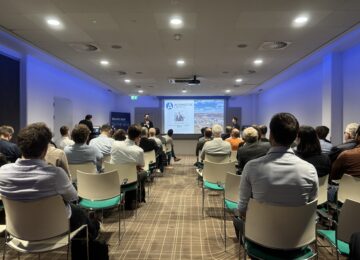TenneT presents ten-year forecast of transmission tariffs
TenneT published its 10-year forecast for transmission tariffs last week. It shows that after a slight decrease in 2025 and 2026, electricity transmission tariffs will continue to increase in the coming years. Until 2035, TenneT expects the HS (high voltage) tariff to increase annually by 4.7% and the EHS (extra high voltage) tariff by 4.3%.
Rise in costs Grid at Sea
Whereas in recent years transmission tariffs have increased mainly due to high energy and power (E&V) costs, in the future investments in the Grid at Sea and the national high-voltage grid will have a greater effect. For example, in 2024 the cost of the Net op Zee (NoZ) in the tariffs was €173 mln. Towards 2034, the costs for the NoZ increase to €4.2 bln. The increase in these costs is directly translated on the level of transmission tariffs.
In doing so, Tennet indicates that the presented ten-year forecast is a forecast with appropriate caveats. The forecast depends on various assumptions such as future procurement results, the development of external parameters such as inflation, the cost of capital and the extent to which the Netherlands electrifies. These developments can have both positive and negative effects on tariff development. Most important is the degree of electrification. Should the large-scale switch to electricity lag behind, there will be fewer grid users to spread the total costs over. In that case, transmission tariffs could be substantially higher.
Redistribution of social costs
The tariff forecast presented also serves as a discussion paper for a broader redistribution issue of the social costs of the energy transition. For example, TenneT indicates that alternative funding of the Grid at Sea could alleviate the increase in transmission tariffs. To ensure the affordability of electricity in the future, an Interdepartmental Policy Study (a collaboration between the Ministries of Finance, Economic Affairs, the Interior and Social Affairs and Employment) has therefore been launched. In this study, together with the Cultural Planning Agency and the Netherlands Environmental Assessment Agency, the current system of paying for the electricity infrastructure will be examined.
Energy Storage NL: cost increase rates
Energy Storage NL is pleased that TenneT is providing clarity on the expected increase in energy storage tariffs through its forecast, giving investors more clarity on the cost increase of storage for the long(er) term.
What is striking in the forecast is that, where currently E&V costs (energy and power) are an important part of the total costs, in the coming years new grid investments (onshore and offshore) are going to become dominant in (the increase of) grid tariffs. In the Kalavasta study recently published by ESNL 'The costs and benefits of batteries in the power system' was correctly argued that under a Non-Firm Ato (NFA) batteries will not contribute to additional peak load on the grid and therefore will not contribute to additional grid investments. Nevertheless, the announced increase in transmission tariffs will cause a further cost increase for storage, while in principle not contributing to new grid investment.
According to Energy Storage NL, this will worsen the business case for storage, by virtue of a cost to which energy storage can make little or no contribution. Energy Storage NL therefore also agrees with TenneT that further investigation is needed to determine whether the funding of Net op Zee should be paid for through the general funds from the central government instead of through tariffs. ESNL therefore calls on the government to take a close look at how these costs can be financed differently and also specifically to look at what effect this will have on the (continued) development of new technologies such as energy storage.





